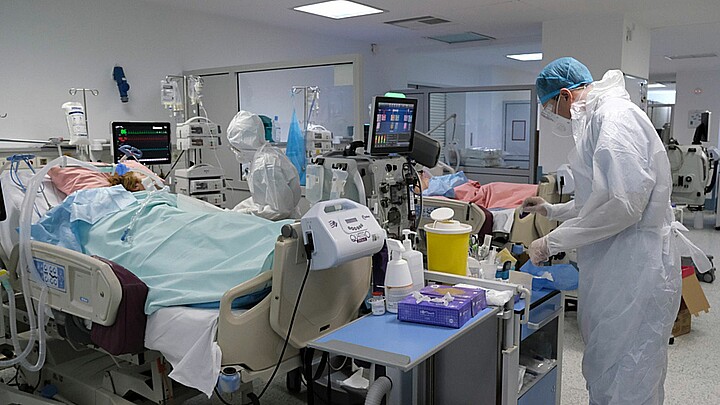Health
Childhood cancer advances having less impact in Hispanic communities, says CDC report
Latino and Black children are more susceptible to higher death rates, according to the Centers for Disease Control and Prevention

November 17, 2023 9:16am
Updated: November 17, 2023 9:20am
A new report published by the Centers for Disease Control and Prevention suggests that advances in childhood cancer have made strides among White children, but been stalled for Hispanic and Black youth.
That fact has left Latino and Black children more susceptible to higher death rates, the report says. The U.S. federal agency continuously tracks pediatric and young adult cancer cases.
Half a century ago, childhood cancer was viewed as uncurable, but is now survivable for many patients, especially those with leukemia. The leading cause of cancer deaths in children is now brain cancer, which is now responsible for about a quarter of cancer deaths for those younger than 20.
Treatments for childhood cancer has improved in recent years, lowering the death rate, but it used to be more proportional, studies show. As of 2001, the death rates were roughly the same for most children.
From 2001-2011 the death rates for White children decreased whereas the rate maintained its course for Hispanic and Black children.
“You can have the most sophisticated scientific advances, but if we can’t deliver them into every community in the same way, then we have not met our goal as a nation,” Dr. Sharon Castellino, a pediatric cancer specialist at Emory University’s Winship Cancer Institute in Atlanta told the Associated Press.
Castellino, who had no role in the new report, said that while new cancer treatments such as gene therapy can cure children for ailments such as leukemia, they also often require attention and supervision, sometimes forcing one parent to remain at home.
“You need at least one parent to quit their job and be there 24/7, and then figure out the situation for the rest of their children,” Castellino said. “It’s not that families don’t want to do that. It’s difficult.”
Another challenge Latino families face is a growing shortage of social workers. Social workers help ensure the child’s health insurance doesn’t lapse and file documents to get parents job-protected leave.
About 15,000 children and teens are diagnosed with cancer every year in the United States. More than 85% live for at least five years.
According to the CDC report, the overall cancer death rate for American children and teens declined 23% from 2001-2021, from 2.75 to 2.10 per 100,000.
The 2021 rate per 10,000 was 1.99 for whites, 2.36 for Hispanics and 2.38 for Black youth.
Overall, the death rates from leukemia were cut nearly in half from 2001 and 2021.
The improved survival rate during the past 20 years is the result of research collaboration among more than 200 hospitals, according to Dr. Paula Aristizabal, who works at Rady Children’s Hospital and the University of California, San Diego.
Aristizabal told the AP she is deliberately trying to work with more Hispanic children, who she says are underrepresented in cancer research.
“Equity means that we provide support that is tailored to each family,” she said.
Dr. Emily Tonorezos, who leads work on cancer survivorship for The National Cancer Institute told the AP her organization is working to collect data from every childhood cancer patient in an effort to give all children improved care.
The CDC’s report is “upsetting and discouraging,” she said. “It gives us a roadmap for where we need to go next.”
Cancer is currently the fourth leading cause of death among children from 1-19 in the United States, according to the CDC.
One of the leading private institutions conducting research and treatment for child cancer and leukemia is St. Jude’s Children’s Research Hospital, founded by actor Danny Thomas in 1962. It treats most patients up to 21 years old, and in some cases those who are up to 25.
The hospital’s headquarters are in Tennessee, but has affiliated hospitals throughout the United States.









